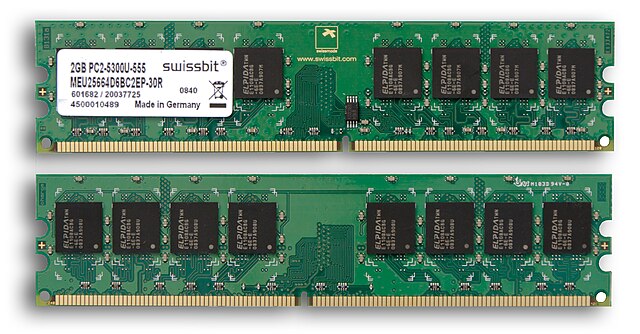Random-access memory is a form of electronic computer memory that can be read and changed in any order, typically used to store working data and machine code. A random-access memory device allows data items to be read or written in almost the same amount of time irrespective of the physical location of data inside the memory, in contrast with other direct-access data storage media, where the time required to read and write data items varies significantly depending on their physical locations on the recording medium, due to mechanical limitations such as media rotation speeds and arm movement.
A 64 bit memory chip die, the SP95 Phase 2 Buffer Memory produced at IBM mid 60s, versus memory core iron rings
Example of writable volatile random-access memory: Synchronous Dynamic RAM modules, primarily used as main memory in personal computers, workstations, and servers.
8GB DDR3 RAM stick with a white heatsink
These IBM tabulating machines from the mid-1930s used mechanical counters to store information.
Computer memory stores information, such as data and programs, for immediate use in the computer. The term memory is often synonymous with the terms RAM, main memory or primary storage. Archaic synonyms for main memory include core and store.
DDR4 SDRAM module. As of 2021[update], over 90 percent of computer memory used in PCs and servers was of this type.
Electromechanical memory used in the IBM 602, an early punch multiplying calculator
Detail of the back of a section of ENIAC, showing vacuum tubes
Williams tube used as memory in the IAS computer c. 1951





![DDR4 SDRAM module. As of 2021[update], over 90 percent of computer memory used in PCs and servers was of this type.](https://upload.wikimedia.org/wikipedia/commons/thumb/6/6c/RAM_Module_%28SDRAM-DDR4%29.jpg/640px-RAM_Module_%28SDRAM-DDR4%29.jpg)


